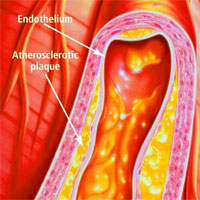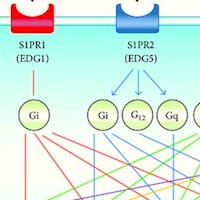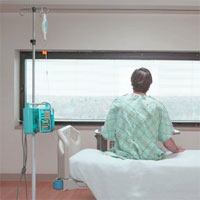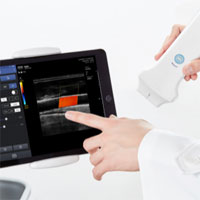Stories Category: Intensive Care

Coronary Endothelial Function and Spontaneous Coronary Artery Dissection
Coronary epicardial and microvascular vasomotor dysfunction is not a predominant feature of spontaneous coronary artery dissection. Endothelial dysfunction is not implicated as the principal underlying mechanism. A total... read more

Complications: A Surgeon’s Notes on an Imperfect Science
Gently dismantling the myth of medical infallibility, Dr. Atul Gawande's Complications: A Surgeon's Notes on an Imperfect Science is essential reading for anyone involved in medicine - on either end of the stethoscope. Medical... read more

Rapid Oral Phenytoin Loading in the ED
Oral phenytoin loading can be achieved in a single dose, obviating the need for an IV while still achieving quick administration, adequate serum levels, and minimal side effects. Both the immediate release (suspension or... read more

Associations of ICU Capacity Strain with Disposition and Outcomes of Patients with Sepsis Presenting to the Emergency Department
The odds that patients in the ED with sepsis who do not require life support therapies will be admitted to the ICU are reduced when those ICUs experience high occupancy, but not high levels of other previously explored measures... read more

Unplanned Early Hospital Readmission Among Critical Care Survivors
Although some readmissions are medically unavoidable, for many ICU survivors complex health and psychosocial issues contribute concurrently to early rehospitalisation. Care pathways that anticipate and institute anticipatory... read more

S1PR2 deficiency decreased macrophage pyroptosis and improved survival in E. coli sepsis
Sphingosine-1-phosphate receptor 2 (S1PR2) deficiency decreased macrophage pyroptosis and improved survival in E. coli sepsis. These beneficial effects were attributed to the decreased caspase-11 activation of S1PR2-deficient... read more

Predictors of Return to Work in Survivors of Critical Illness
Major trauma, lower GCS and increased hospital length of stay predicted inability to return to work due to health at six-months post-ICU admission. Compared to employed patients, those who had not returned to work reported... read more

Validation and Clinical Implications of the IDSA/ATS Minor Criteria for Severe Community-Acquired Pneumonia
These findings support the use of the IDSA/ATS minor criteria to predict hospital mortality and guide ICU admission in inpatients with Community-Acquired Pneumonia (CAP) who do not require emergency mechanical ventilation... read more

Co-Occurrence of Post-Intensive Care Syndrome Problems Among 406 Survivors of Critical Illness
In this multicenter cohort study, one or more post-intensive care syndrome problems were present in the majority of survivors, but co-occurring problems were present in only one out of four. Education was protective from... read more

Clinical Practice Guidelines for the Prevention and Management of Pain, Agitation/Sedation, Delirium, Immobility, and Sleep Disruption in Adult Patients in the ICU
Under the auspices of the Society of Critical Care Medicine, this executive summary aims to provide the most clinically meaningful and novel aspects, by section, of the PADIS guidelines that clinicians, stakeholders, and... read more

Intensive care in severe malaria: Report from the task force on tropical diseases by the WFSICCM
Severe malaria is common in tropical countries in Africa, Asia, Oceania and South and Central America. It may also occur in travelers returning from endemic areas. Plasmodium falciparum accounts for most cases, although P... read more

Effectively Expressing Empathy to Improve ICU Care
In nearly every intensive care unit (ICU) at every pediatric hospital across the country, physicians hold numerous care conferences with patients' family members daily. Due to the challenging nature of many these conversations--covering... read more

Effect of procalcitonin-guided antibiotic treatment on clinical outcomes in ICU patients with infection and sepsis patients
Procalcitonin-guided antibiotic treatment in ICU patients with infection and sepsis patients results in improved survival and lower antibiotic treatment duration. Mortality in the 2252 procalcitonin-guided patients was significantly... read more

Battle of Portable Ultrasound Devices
So here is Part 1 of the as promised portable ultrasound reviews. The aim, to un-muddy the water a bit for you all over choice and functionality. There are so many put there at the moment, we wanted to test them on the shop... read more








